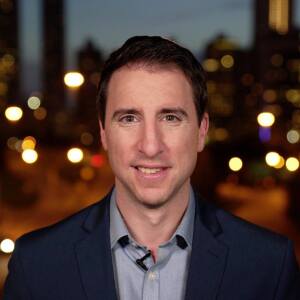TAHLEQUAH, Okla. — The history between largely rural states and Native American communities is filled with broken promises and surrendered land.
In a small town in Oklahoma, a state university and the Cherokee Nation have launched the nation’s first tribally affiliated medical school by seeing what rural and tribal America have in common.
An unlikely story? Just ask Alex Cosby, a current student at the school.
“If you had told me 10 years ago there’d be a medical school with state-of-the-art equipment and a state-of-the-art outpatient center," Cosby said, "I’d say, ‘Tahlequah? That’s gonna be in Tahlequah?’”
Tahlequah is the capital of the Cherokee Nation, which covers 7,000 square miles in northeast Oklahoma. Cosby is a student at Oklahoma State University’s College of Osteopathic Medicine, a collaboration between OSU and the Cherokee Nation. That statement makes history. But the history behind it is what makes it such a statement.
“If you went back a century, you wouldn’t predict it," said Chuck Hoskin, Jr., principal chief of the Cherokee Nation.
“You would say, ‘Look, this is a relationship that can never be healed and perhaps the Indian nations will vanish,' which was the intent of some of those policies. We didn’t vanish. We’re still here: the best friends the state of Oklahoma’s ever had.”
The story of the Cherokee Nation is far too familiar for Native tribes: a story of broken treaties and forced surrender of land to the U.S. government. But in recent years, the Cherokee Nation has poured resources into health care, for reasons its non-tribal neighbors know well.
“If you’re in a rural part of the country," Hoskin said, "what you’re going to find is you’re going to find health care facilities that in some cases withering on the vine in terms of their ability to stay in business. It affects us because that’s where we’re recruiting.”
The Cherokee Nation has built the largest tribal health care system in the country. They use federal funds and their own funds to provide free health care for their citizens. They've spent hundreds of millions of dollars on new facilities.
But a medical school offers not just care but a chance for careers.
“In some counties in Oklahoma, they may have one primary care physician or no primary care physicians," said Dr. Kayse Shrum, president of Oklahoma State University. “For us, it was serving and educating rural and underserved Oklahoma. And for the tribes, it was about improving access and quality of care.”
Dr. Shrum was dean of the College of Osteopathic Medicine before she took over as university president. She helped engineer the collaboration with leaders at the Cherokee Nation.
“I didn’t know any physicians as family friends or on a personal level really, outside of appointments," Cosby said.
But he signed up for biology in college and got an A. He kept going and kept thriving. Now, he’s in position to be that physician the next generation knows.
“I hope people can see that no matter what your background is, no matter what conditions you’re dealing with, you can succeed in life," he said.
“A doctor, statistically, is going to practice within about 100 miles of where she gets her medical education," Hoskin said. "And that worked against us for the longest time. If you flip the script, and you train people in a world-class medical school in Tahlequah, you start to change what those statistics mean.”
Today in Tahlequah, a big orange O-S-U enmeshes with Cherokee text. Rural America meets tribal America because, for the most part, tribal America is rural America. Painful history has healed enough for an important union.





![SNG_Digital_Ad_480x360_CTA[13].jpg](https://ewscripps.brightspotcdn.com/86/a2/ba7c24d445c6bc7c85d9e749207a/sng-digital-ad-480x360-cta13.jpg)